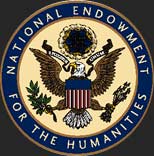Lessons
Lesson for Core Concept #6: Consequences of Individual Choices
Jacqueline Fernandez, Graduate Education Intern, Tufts
At some point, each colonist had to face the individual dilemma of whether to remain loyal to the Crown or resist, knowing that his choice would have consequences.
Seafaring Wanderers and Their Stories
Purpose:
Encourage and develop students’ ability to analyze primary source documents, work in teams, pick up on similarities in two documents and two individuals’ experiences, and using the information extracted from a letter and newspaper article and guidelines provided, creatively develop a hypothetical dialogue.
Goals:
By the end of the activity, students will understand that:
- the question of where one’s loyalty lies is a very personal decision that depends on many factors including family ties and economics
- personal choices in times of war are considered public knowledge
- colonists could face major repercussions for their choice of Tory or Patriot sides
Activity:
Write a dialogue and fun limerick based on the primary source document reading and hypothetical meeting of James Murray and Captain Jones.
Timeframe: One class period
For homework, students have read the The Stamp Act document “Prosperity the end; protectionism the means” and The Boston Tea Party document “Good Indians, Bad Indians.” Students should answer the Document Analysis Worksheet for the primary sources and take brief notes on the documents. Both the notes and worksheets should be brought to class and used in the activity.
Part I:
Students will be broken into teams of two and be instructed to create a dialogue that might have occurred had James Murray, author of “Prosperity the end” and Captain Jones, protagonist of “Good Indians, Bad Indians” ever met. Students can work on the dialogue for most of the class, but teachers may wish to allow fifteen minutes at the end of class for a fun limerick writing exercise based on their readings.
The dialogue writing exercise will be prefaced with the following information:
Picture this: James Murray and Captain Jones meet randomly on a ship at sea. Ships are close quarters and inevitably, Murray and Jones begin conversing about themselves and their lives. Mr. Murray, lacking direction and not very optimistic, has recently decided to “leave off bustling for the world”. The distraught Captain Jones, having just found out that his home was ransacked, is hardly faring any better. Jones suspects that the ransacking was a consequence of a decision he made in Albany quite some time ago. Reflecting on his act and the repercussions upon his home and family life, he tells Mr. Murray why he was motivated to make the decision he did. Mr. Murray responds with his own story of woe. As they play a round of cards and share some rum, the men listen to one another and realize they have more in common than meets the eye—both have made personal choices based upon various factors and those choices have had and will likely continue to have repercussions.
In one to one and a half pages, students will write up the dialogue that takes place between Murray and Jones, including within it:
- Four important factors that played into their decisions;
- What the men’s personal choices were and how and if those choices came to be known;
- Whether they have selected the Tory or Patriot sides, and if so, what repercussions they have faced and/or could face as a result;
- If the men felt like they were taking sides when they made the decisions they did.
Part II:
If students have not completed their dialogues, they can finish them individually for homework. In addition to completing the dialogue, students should write a very brief epilogue to describe what became of Mr. Murray and Captain Jones, including any major decisions they might have gone on to make and what repercussions their actions would have had.
Optional Homework Assignment
To exercise creativity after class, students may be assigned to write a limerick on either James Murray or Captain Jones based upon the class readings and activities. Limerick writing is a useful exercise for engaging students. Limericks are short five-line poems with a rhyme scheme of AABBA which means the last word of lines one, two, and five must rhyme with each other, and the last word of lines three and four must rhyme with each other. Finished limericks can be read aloud in class and students can vote on the best limerick.



